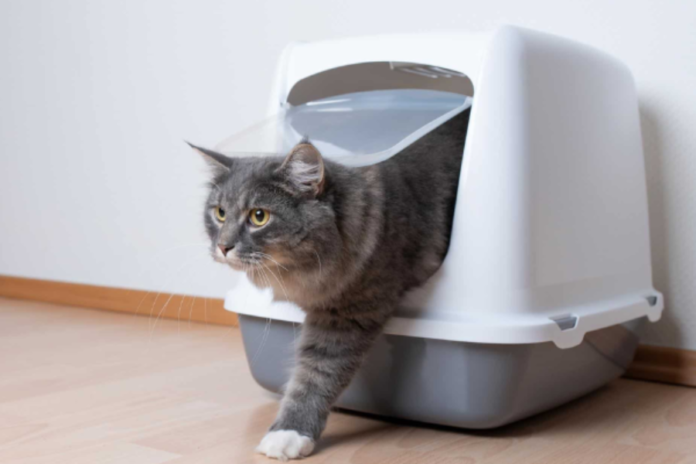
If you’ve found your cat straining to urinate, urinating around the house or crying from the litter box, you may have a case of urine crystals or bladder stones on your hands.
In addition to causing your cat pain and discomfort, untreated bladder crystals or stones can lead to serious health complications.
Urinary crystals are microscopic mineral structures that can occur in feline urine. Sometimes these crystals will accumulate and solidify into stones, called struvite stones. Urinary crystals are made up of minerals that occur naturally in a cat’s body. When these minerals exceed their normal concentration, they can build up and disrupt the cat’s normal urinary function, causing pain, blood in the urine and trouble urinating.
There are several root causes believed to contribute to the buildup of urine crystals and struvite stones in cats. According to Veterinary Centers of America, struvite stones can be caused by the bacteria associated with a urinary tract infection. If there is no infection present, as Dr. Goldstein says, veterinarians don’t always know why a cat develops urinary crystals or stones. It’s thought that decreased water intake can lead to a higher concentration of minerals in urine, causing crystals to form. Cats have evolved as a species to get the majority of their water from live prey, but this is unrealistic for domestic cats, especially if they’re indoor-only and prefer dry food. If a cat is less inclined to drink water alongside their dry food, there’s less water present in the body to flush out waste, leading to a buildup of toxins and potential health issues.
SYMPTOMS OF CRYSTALS IN CAT URINE
Watch your cat for these symptoms, and contact your veterinarian immediately if your cat:
- Uses the litter box with increasing frequency
- Strains to urinate
- Urinates outside of the litter box
- Experiences painful urination (listen for crying meows)
- Licks genitals excessively
- Has bloody urine
- Has a poor appetite
- Seems lethargic and depressed
DIAGNOSIS & TREATMENT
Diagnosing urine crystals or stones requires a visit to the vet. Treatment includes:
Prescription diet: Your vet will prescribe a temporary specially formulated food that alters the chemical composition of your cat’s urine and causes the stones to gradually dissolve within 1-2 months. Your cat may not ingest anything except the prescription food: That means no treats, no snacking from your other cats’ dishes, no hunting outside.
Surgery: If your cat can’t (or won’t) stick to the prescribed food, a cystotomy can be performed to remove the stones.
PREVENTION OF THE RECURRENCE OF STRUVITE CRYSTALS
Though the root cause of urine crystals is largely unknown, there are a few preventative measures you can take to make sure your cat stays struvite stone-free. Since cats are carnivores, their urine is slightly acidic. Urine with high alkaline levels is more likely to develop crystals, so maintaining proper pH levels through a balanced diet is important. Your cat’s diet should incorporate plenty of animal proteins and moisture, whether through high-quality wet food, or an entirely homemade or raw diet. Cats who consume only dry food (especially varieties with lots of filler ingredients) are at higher risk for developing bladder stones.
A dry food diet that’s high in meat and low in carbohydrates and fillers will help to maintain optimal urine pH.
To read the full Guide to Crystals in Cat Urine as it first appeared on the RAWZ Natural Pet Food site, please visit: https://rawznaturalpetfood.com/cat-urine-crystals-struvite/



